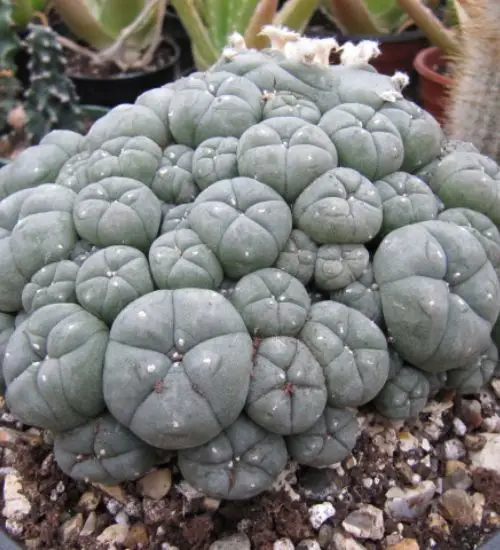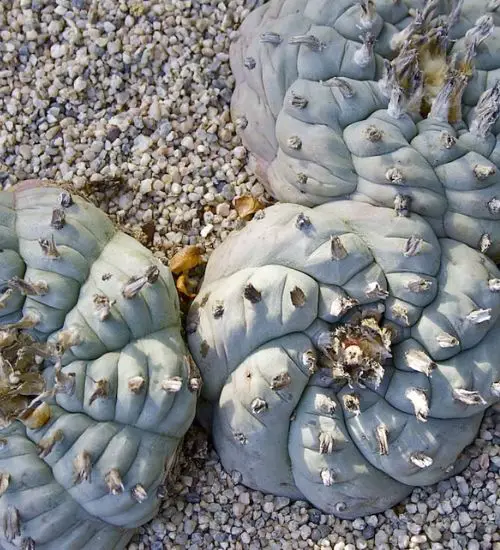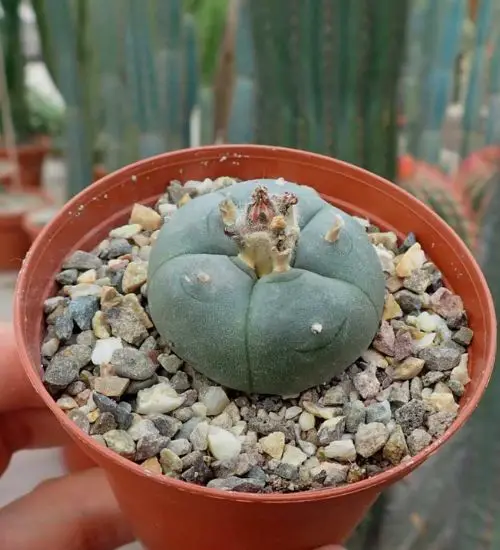Sun: full sun
Water: Typical water needs for a succulent
Temperature: Zone 8b from 15° F to 20° F (-9.4° C to -6.7° C)
Winter Survival: Not cold hardy
Propagation: seeds
Flower: in the summer
Flower Type: white, pink
Toxic: Toxic to humans and animals
Dormant: winter
Space Requirement: Indoors & Outdoors
Common Problems: Plants may rot if overwatered
Where to buy Lophphora williamsii (peyote)?
Basc Care for Lophphora williamsii (peyote)
Watering
What you need to remember is that this type of succulents needs to be watered for every 2 weeks
Can you water your succulent more than what its need? The answer is yes and no. In extreme conditions, you can water your plants more often when you notice the soil is completely dry.
Fertilizing
Only feed this succulent during its active growing seasons which means winter. Use the right fertilizer applied in the right amounts. Applying half-strength balanced fertilizer every month or so is recommended for optimal results.
Do not fertilize during winter as the plant is dormant.
Sun & Location Requirements for "Lophphora williamsii (peyote)"
Lophphora williamsii (peyote) requires full sun in order to thrive. When choosing a spot for your succulent, make sure it gets at least 6 hours of direct sunlight per day. If the leaves start to look pale or weak, this could be an indication that the succulent isn't getting enough light.
When temperatures drop below freezing, it is important to take precautions to protect Lophphora williamsii (peyote) from the cold. Insulating and providing adequate drainage for the plant are key elements in helping it survive winter weather. Wind and sun exposure should also be minimized to prevent frost damage.
Any succulents in the group will need a medium space to grow. You can place your pot at your table or window. Since this plant needs more space than mini succulents, you should consider do not plant them together with other succulents/plants.
Propagation
Growing Lophphora williamsii (peyote) from seeds is an easy and economical way to produce more plants. Identify a healthy seed by its plumpness, dark color and slightly sticky texture. Once the potting mix has been pre-mixed with well-draining soil, sow the seeds evenly and press lightly into the surface. To ensure germination, keep the container in bright but indirect light and mist the soil gently with a spray bottle.
Toxicity

The leaves of Lophphora williamsii (peyote) contain an array of toxins that can lead to symptoms such as abdominal cramps, nausea and even death if ingested. It is essential to keep this plant away from both humans and animals.


